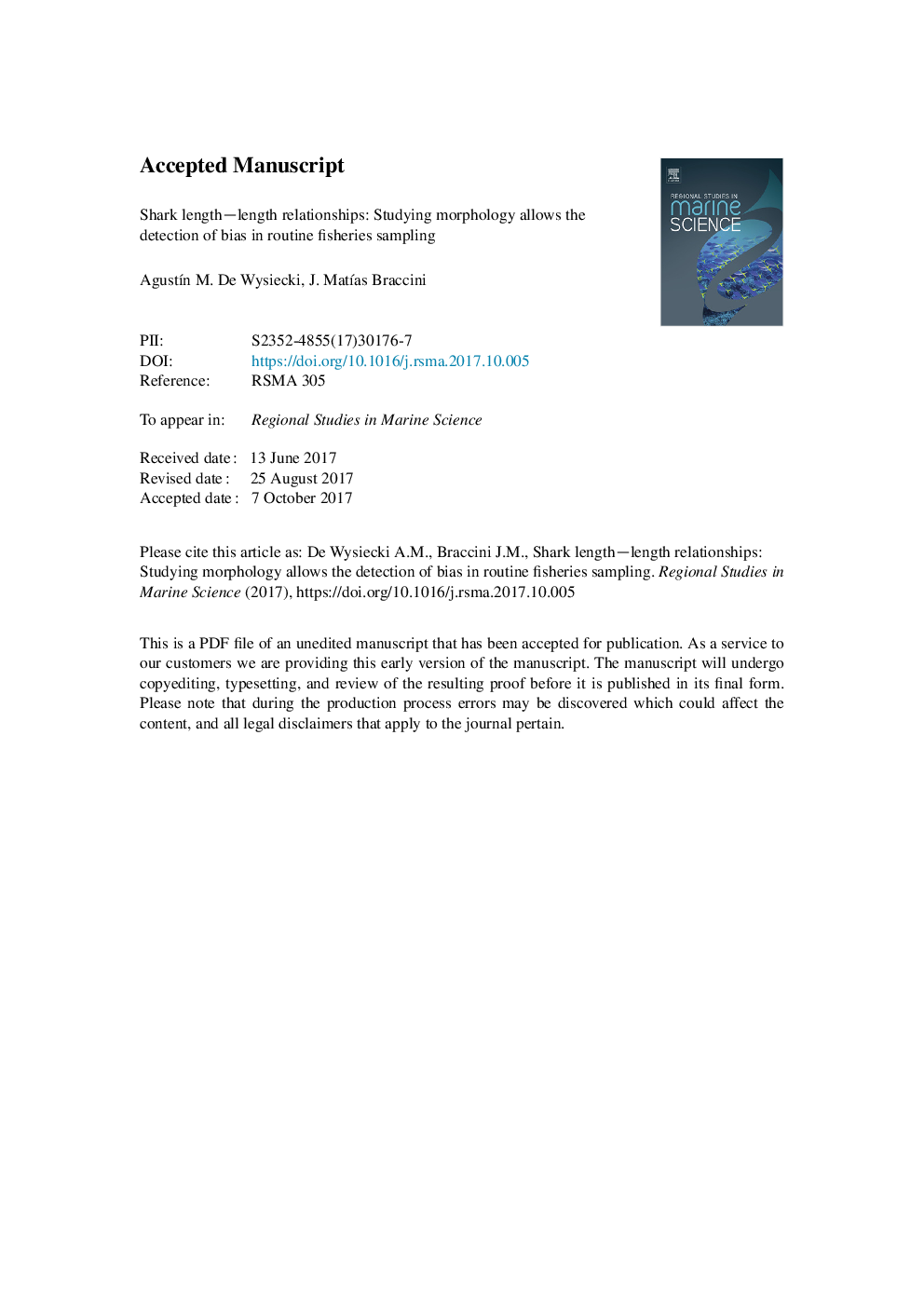| Article ID | Journal | Published Year | Pages | File Type |
|---|---|---|---|---|
| 8872679 | Regional Studies in Marine Science | 2017 | 15 Pages |
Abstract
Reliable information on length-length relationships is required for standardising and comparing size measures and for improving the use of available data and biological information collected as a function of different size measures. Here, we used biological information on sharks and rays collected by on-board observers in Western Australia since the 1990s to estimate the total length-fork length relationships for 31 species. For an additional five species, the estimated model coefficients were unreliable. Further analysis for four wobbegong species indicated that some records could have been misidentified. For sixgill sharks, the linear model fitted the data well but visual exploration showed that two observers systematically measured this species differently. Our study shows that length-length relationships can be used to detect biases in biological data sets.
Keywords
Related Topics
Physical Sciences and Engineering
Earth and Planetary Sciences
Oceanography
Authors
AgustÃn M. De Wysiecki, J. MatÃas Braccini,
